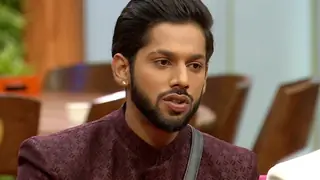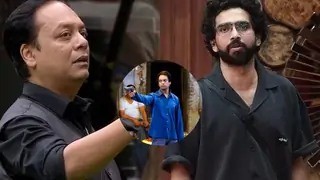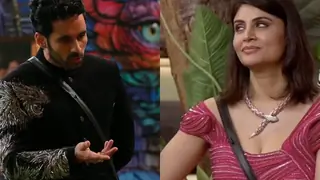SITAR ARTIST SHARES INDIA'S MUSICAL HERITAGE
BY CYNTHIA LEE / UCLAToday Staff
Four decades ago, a tie-dyed generation of Beatles fans looking to the East for mystical enlightenment lost themselves in the hypnotic sounds of the sitar in the hands of Ravi Shankar.
Now a new generation on campus is discovering the sitar in a more meaningful light, played in a different style by a virtuoso who is regarded by Indian audiences as one of the foremost North Indian classical musicians of his generation.
Shujaat Husain Khan is building a new appreciation for Indian classical music at UCLA.
"Ravi Shankar's association with the Beatles made the sitar a familiar instrument to Westerners," noted Khan, who has performed at the Royal Albert Hall in London as well as Carnegie Hall in New York. "But over the years, they have started to understand Indian music on a much deeper and more refined level. Westerners are now able to pick up nuances, like the stylized differences between Ravi Shankar and our style."
Khan teaches UCLA students the sitar as a visiting professor in the Department of Ethnomusicology.
"I enjoy working with students from different parts of the world — it gives us all a chance to get inside each other's culture," Khan said.
He is a seventh-generation sitar master, the product of a prominent musical dynasty based on the age-old concept of Khandan, the lineage through which sons inherit their status, in this case, as professional musicians.
Khan is the subject of a documentary, "Khandan: The Musical Heritage of Shujaat Khan," by videographer Arundhati Sen Neuman, who vividly recounts the upbringing and rigorous training of this khandani musician.
From his lineage, the prominent Imdad Khan Gharana family, have come some of the most influential sitarists of their time, including his father, Ustad Vilayat Khan. The elder Khan developed the vocal "singing" style, called gayaki ang, that his son now performs at venues all over the world.
"The objective is to follow the human voice, which remains the most direct connection between humans," Khan explained. "So although the strokes on the right hand are used as before, the gayaki ang involves movements with the left hand that seek to bring a continuity in sound and composition similar to the human voice." In his hands, the lutelike sitar literally sings with a full range of emotions and expressions.
Khan always knew from early childhood that his destiny would be music. At 3 years old, he was already playing two to three hours a day under the tutelage of his father, who used musical games to sustain the boy's interest.
Visits to his grandfather's home in Calcutta became opportunities to play the sitar for four to five hours straight with his cousins, their fingers flying over the frets, each trying to outplay the other.
"It is special that a person, like me, gets a chance to grow up surrounded by music," he said, although he admits, "I did wish I had a choice. There were times when practice was tiring and heartbreaking, especially when you knew that your friends were having a good time."
Today, Khan carries on the grand tradition and revels in what he calls "an immense appreciation of Indian music. I can see reverence for it growing as people understand more and more of its intricacies."





















